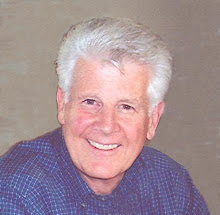Leaving Skagway and the Gold Rush Era.
We have now been up and down the White Pass several times. The narrow gauge railroad goes through Tormented Valley, passes the border patrol into Canada and then to Carcross.
One of the tourist attractions is to take a group of bicyclists up to the top of the pass, about 14 miles, and have them ride down. It looks like a pretty grim adventure when it's 44 degrees out, and the wind is blowing. Why aren't these people smiling?
This time, we are taking a cutoff from Carcross to the Alaska Highway, bypassing Whitehorse. This is the route the miners took after they reached the top of either White Pass or the Chilkoot Pass. The Mounties stopped them at the Tagish River to extract a tariff for everything they were carrying. They built boats out of the plentiful timber along the lakes, and made makeshift sails and made their way to the Yukon River, just above the Whitehorse Rapids. The area is beautiful, as we go past Tagish Lake and Windy Arm, where the wind capsized many of the little poorly built sailboats. There are beautiful buttes and mountains along the way.
The caribou herd that used the area between the lakes was displaced by the railroad and the town of Carcross, (which used to be known as Caribou Crossing). They have moved east, and although we didn’t see them, I was glad to learn that they have survived.
At the Carcross visitors center, I asked about going to the cemetery to see the graves of George Carmack’s Indian wife Kate, her brother Skookum Jim and nephew Tagish Charlie. The area is on First Nations land, and they no longer let people go there unless directly related. George Carmack is credited with discovering gold in the Klondike. Skookum Jim and Tagish Charlie had been guides and packers on the Chilkoot Trail and the three men became partners. They discovered gold in the Klondike and they all became rich from their claims.
Unfortunately, the two Indian men lost a lot of their money to gambling, drinking, and even literally throwing it out the window. Tagish Charlie became known as Dawson Charlie, after some confusion over too many men with the same name. He was walking home after a Christmas party, fell off the railroad bridge, slipped under the ice, and his body was found several days later. That was in 1908. He did buy property in Carcross, including the Carcross Hotel, which is still there.
Skookum Jim lived to be about 60. He took care of his sister Kate Carmack, and also established a trust fund for his daughter Daisy, the funds investments of which have been parleyed into a Skookum Jim Friendship Centre in Whitehorse. The trust fund was established when it was determined that Jim could not handle his wealth or drinking and was in danger of losing it all. He died in 1916.
Kate died in the flu epidemic of 1920. She lived in poverty in for 20 years. Graphie, their daughter lived into the 1960's in California, and contested her father's will. The suit was settled out of court, and most of her money went to lawyers.
George Cormack rid himself of his Taggish family after they embarrassed him by drunken behavior and getting arrested in Seattle (including Kate). She fought a long legal battle with George, but they were never legally married, and George married another woman who had been in South Africa following mining and miners, and came to Dawson City looking for a rich husband. She was operating a “cigar store” and brothel in Dawson City when they met. He died a rich man, due to real estate investments made by his wife Margeurite. But they both still liked gold prospecting, and continued it throughout their lives. After his death in 1922, his wife sunk all of their money into mining operations near Snoqualmie Falls east of Seattle and in California. So she also died poor.
Patsy Henderson, the nephew of Kate and Skookum Jim, and who also had part of the Discovery mining claim, became a tourist attraction in Carcross, dressing in native garb and performing for tourists from the train. He had been hired by the railroad and was billed as a "Historiographer who provides lectures on the Indian way of life." He also lived into the 1960's. The lady at the Visitor's Centre remarked, "There are many, many stories just like this."











No comments:
Post a Comment